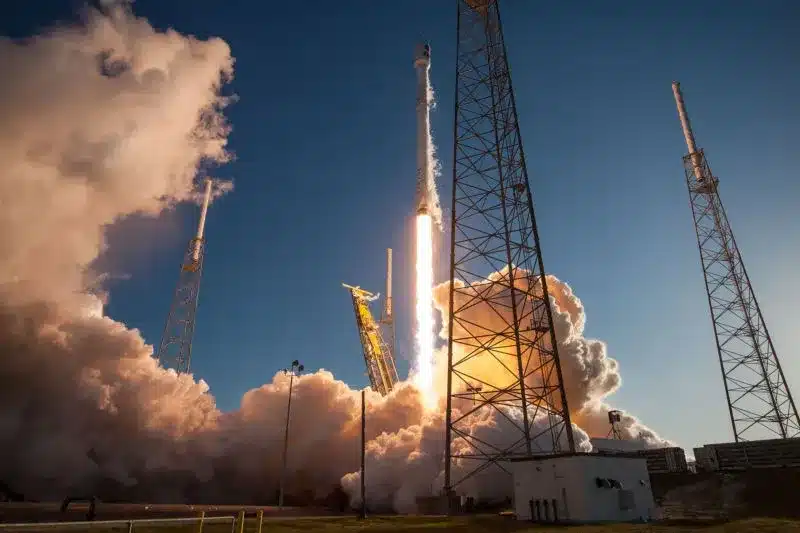About GSAT-N2 (GSAT-20):
- It is India’s advanced communication satellite.
- It was developed by New Space India Limited (NSIL), the commercial arm of ISRO under the Department of Space.
- It was launched onboard SpaceX’s Falcon-9 rocket into a geosynchronous transfer orbit.
- It is designed to provide data and internet services to remote regions and enable in-flight Internet connectivity across the Indian subcontinent.
- It will provide significant data transmission capacity, particularly for India’s Smart Cities Mission.
- Features:
- It is a high-throughput communication satellite operating in the Ka-band.
- The satellite is equipped with multiple spot beams and is designed to support a large user base, utilizing small user terminals.
- GSAT-N2 features 32 user beams—8 narrow spot beams over the Northeast region and 24 wide spot beams covering the rest of India.
- These beams will be supported by hub stations across mainland India.
- The satellite’s Ka-band high-throughput communication payload provides a throughput of around 48 Gbps.
- The GSAT-N2 satellite, with a lift-off mass of 4,700 kg, has a mission life of 14 years.
- This is India’s highest throughput satellite and the only one exclusively operating in the highly sought-after Ka-band.
Why Falcon-9 rocket was chosen?
- While ISRO’s Mark-3 launch vehicle can place up to 4,000 kg into a geostationary transfer orbit, the GSAT-N2’s weight of 4,700 kg required a different solution.
- As a result, ISRO turned to SpaceX’s launch vehicle for the mission, marking ISRO’s first commercial collaboration with SpaceX.
Q1: What is a Geosynchronous Transfer Orbit (GTO)?
A GTO is a highly elliptical orbit used to transfer a spacecraft from a low Earth orbit (LEO) to a geosynchronous orbit (GEO). GEO is a circular orbit around Earth where the satellite matches Earth’s rotation period, making it appear stationary relative to the ground.
News: SpaceX’s Falcon-9 deploys India’s GSAT-N2 satellite into orbit
Last updated on December, 2025
→ Check out the latest UPSC Syllabus 2026 here.
→ Join Vajiram & Ravi’s Interview Guidance Programme for expert help to crack your final UPSC stage.
→ UPSC Mains Result 2025 is now out.
→ UPSC Notification 2026 is scheduled to be released on January 14, 2026.
→ UPSC Calendar 2026 is released on 15th May, 2025.
→ The UPSC Vacancy 2025 were released 1129, out of which 979 were for UPSC CSE and remaining 150 are for UPSC IFoS.
→ UPSC Prelims 2026 will be conducted on 24th May, 2026 & UPSC Mains 2026 will be conducted on 21st August 2026.
→ The UPSC Selection Process is of 3 stages-Prelims, Mains and Interview.
→ UPSC Result 2024 is released with latest UPSC Marksheet 2024. Check Now!
→ UPSC Prelims Result 2025 is out now for the CSE held on 25 May 2025.
→ UPSC Toppers List 2024 is released now. Shakti Dubey is UPSC AIR 1 2024 Topper.
→ UPSC Prelims Question Paper 2025 and Unofficial Prelims Answer Key 2025 are available now.
→ UPSC Mains Question Paper 2025 is out for Essay, GS 1, 2, 3 & GS 4.
→ UPSC Mains Indian Language Question Paper 2025 is now out.
→ UPSC Mains Optional Question Paper 2025 is now out.
→ Also check Best IAS Coaching in Delhi

















